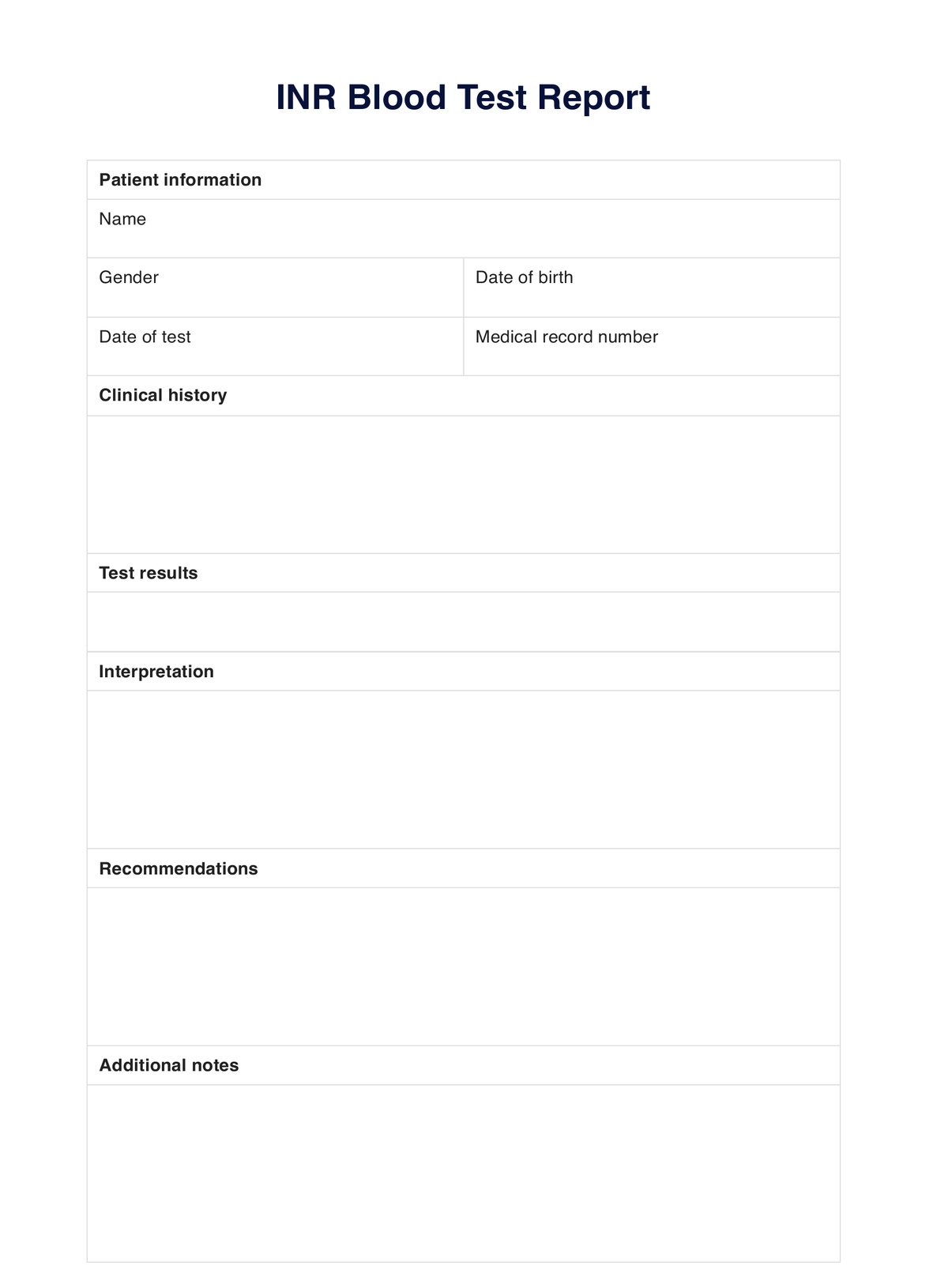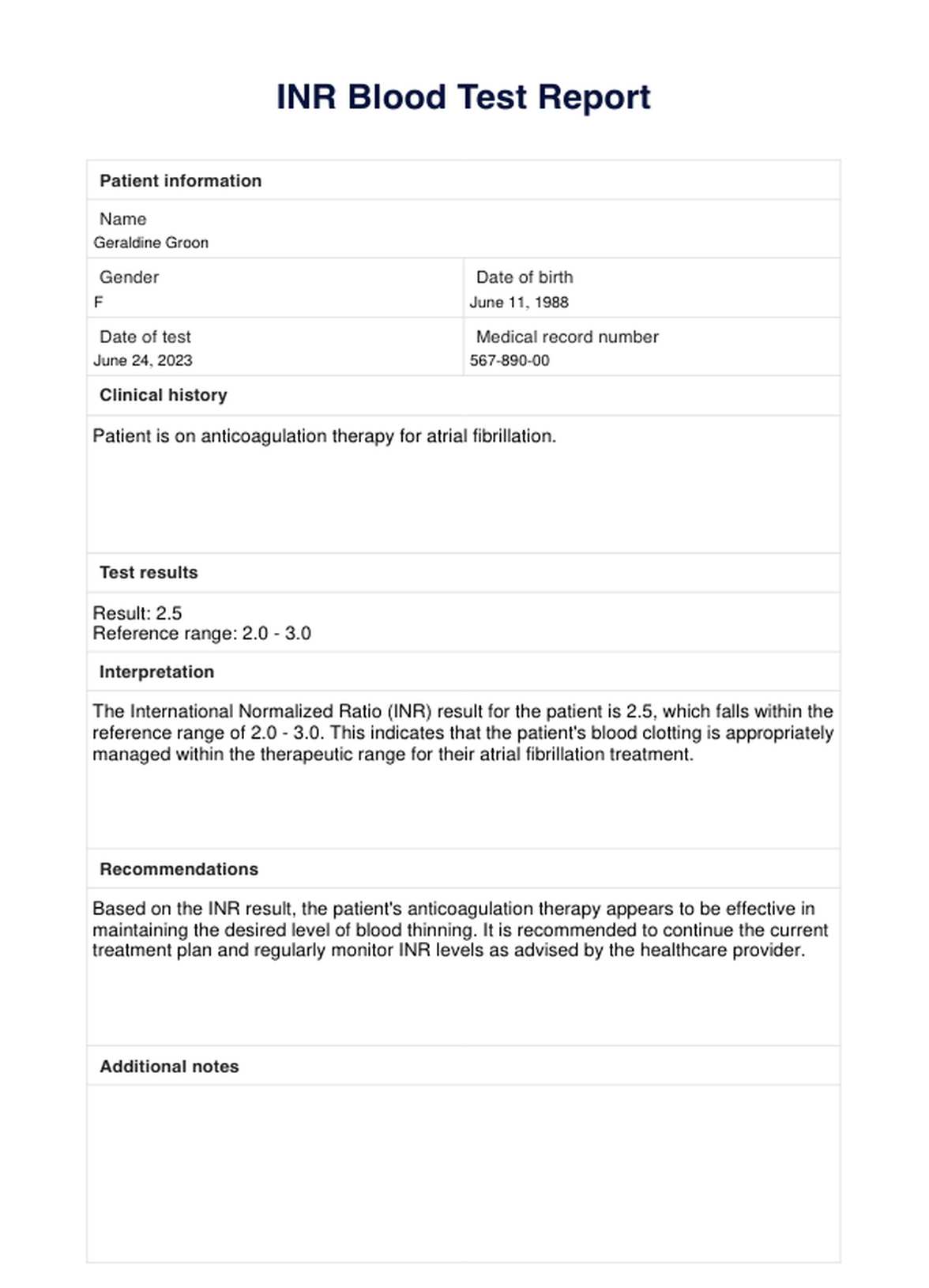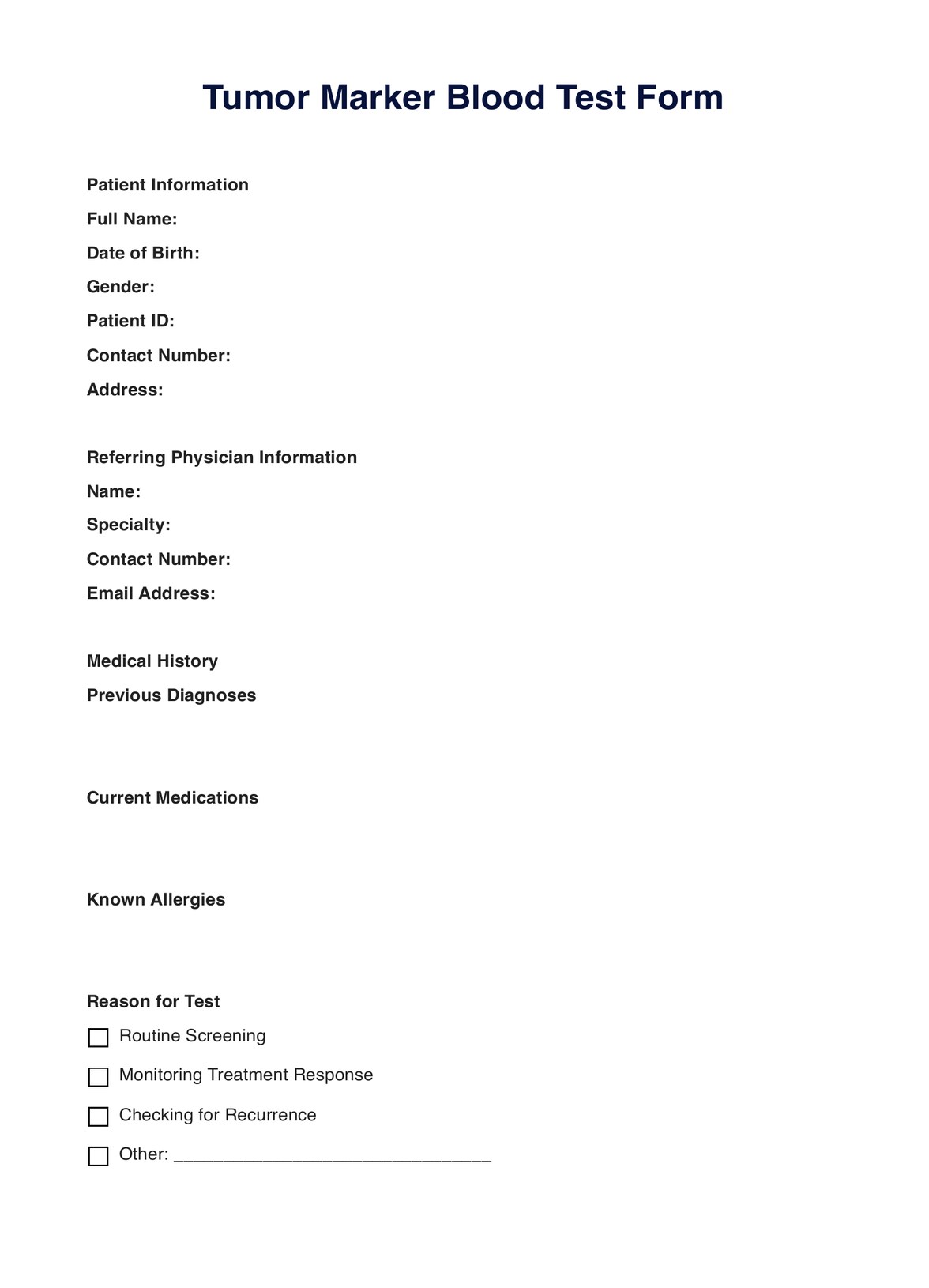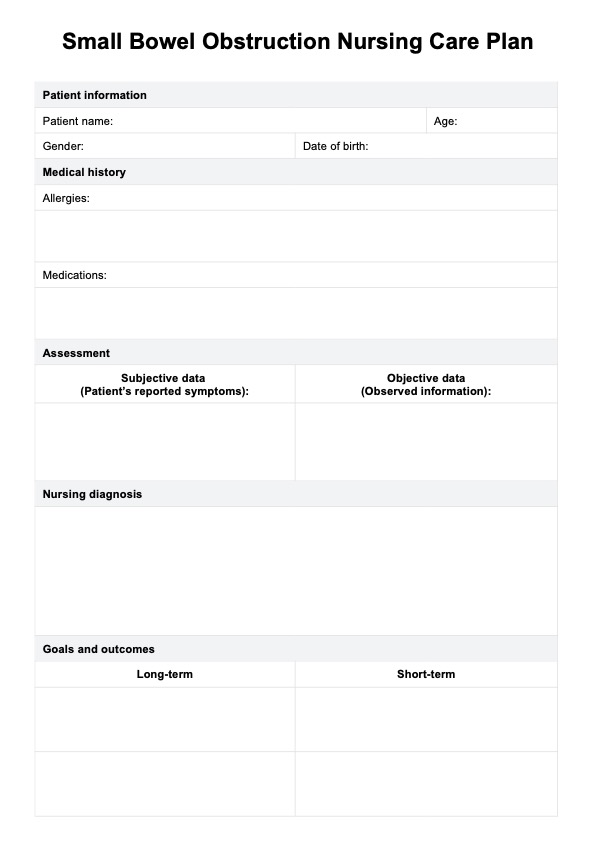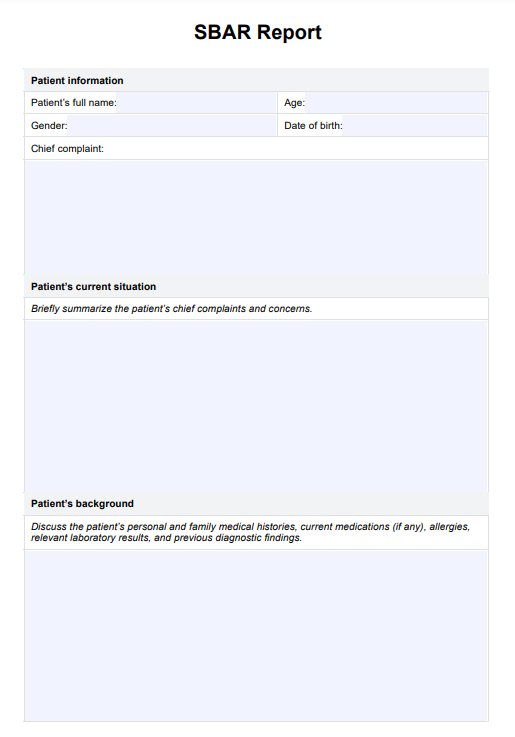INR Blood Test Reports
INR Blood Tests help monitor blood clotting tendencies. Download an INR Blood Test Report to organize and record patient results.


What is an INR blood test?
Blood clotting tendencies are the proclivity of the blood to form clots, a critical process that prevents excessive bleeding when a blood vessel is injured. However, an increased or decreased blood clot tendency can lead to serious health complications. An elevated clotting tendency can result in unnecessary clots, leading to conditions such as deep vein thrombosis or stroke. On the other hand, decreased clotting can result in excessive bleeding, making even minor injuries potentially dangerous.
A prothrombin time test measures how long it takes for blood to clot, assessing the functioning of clotting factors, especially in the extrinsic and common pathways. A healthcare professional takes a blood sample, adds thromboplastin and calcium, and records the clotting time in seconds. The prothrombin time test may also be called the International Normalized Ratio (INR) Blood Test since results are reported as an international normalized ratio (INR), which standardizes the clotting time across different labs.
Patients on the blood-thinning medication warfarin (which prevents dangerous blood clots) need regular INR tests to evaluate the medication's effectiveness and adjust dosages as necessary. This monitoring is crucial for managing the risk of blood clots and diagnosing a bleeding disorder in patients with abnormal bleeding or clotting symptoms.
A blood sample is taken during the examination, and the results are calculated to determine the patient's blood clotting ability. The results are then documented in an INR Blood Test Report, which records the patient's clotting tendencies. This report is essential for tracking the patient's progress, adjusting medication dosages, and identifying potential risks or complications. It provides healthcare professionals with valuable information to make informed decisions regarding patient care.
INR Blood Test Reports Template
INR Blood Test Reports Example
How does our INR Blood Test Report template work?
Carepatron's printable INR Blood Test Report is easy to use and helps you record and organize patient results. The report contains sections for personal information, medical history, and INR test findings. Follow these steps to get started:
Step 1: Download the template
Access the free INR Blood Test Report using the link on this page. You may also get a copy from our general practice management software's resources library.
Step 2: Fill out personal information
Enter the patient's name, date of birth, and any other relevant personal information in the designated section of the report. This is important for correctly identifying the individual and their medical history.
Step 3: Record clinical history
Note any medical conditions or medications known to the patient in this section, especially those related to anticoagulant therapy. This can provide valuable context for interpreting the INR test results.
Step 4: Document the results
Include the INR test result and any recommended actions based on the outcome. Adjust medication dosages, guide dietary restrictions, and note any necessary follow-up appointments. Compare results with normal blood clotting time range.
Step 5: Explain the results to your patient
Share the report with your patient and review the findings together. Educate them on their INR levels, the significance of the results, and how they can manage their anticoagulant therapy effectively.
Step 6: Keep a copy for future reference
Save a copy of the report in the patient's electronic health records for future reference. This can assist with ongoing treatment and prevent unnecessary re-testing.
When would you use this test report?
Use the INR Blood Test Report template for patients needing INR monitoring due to bleeding disorders, anticoagulant medications, or clotting disorders. It helps diagnose, monitor, and manage bleeding or clotting conditions and ensures anticoagulant medications effectively prevent blood clots.
Monitor and adjust anticoagulant therapy
The INR Blood Test Report helps monitor how well anticoagulant medications work, allowing dosage adjustments to prevent bleeding complications. Routine coagulation testing ensures accurate management of anticoagulant therapy and overall patient health.
Educate patients on their INR levels
Use our template to educate patients about their INR levels and why it's crucial to maintain them within a specific range. You can also use it to guide lifestyle changes and dietary considerations.
Plan follow-up appointments and interventions
The report helps you plan follow-up appointments to re-evaluate INR levels and make necessary interventions, such as medication adjustments, to maintain optimal clotting control.
Collaborate with other healthcare professionals
You can also use the INR Blood Test Report to collaborate with other healthcare professionals, such as pharmacists and hematologists, to ensure coordinated care for patients on anticoagulant therapy.
Understanding INR test values
The results of an INR blood test help determine a patient's blood clotting tendencies. The INR value represents the patient's clotting time compared to a standardized reference range. A higher INR indicates longer clotting times, meaning the blood is less likely to clot, which is desirable for those on anticoagulant therapy.
Liver disease can impact blood clotting and INR values by reducing the production of coagulation factors, leading to prolonged clotting times.
Here's a simple explanation of what different INR values could mean:
- INR of 1.0: This is the normal clotting time for someone not on anticoagulant therapy. It indicates that the blood is clotting as expected, and there is no increased risk of bleeding or clotting.
- INR below 2.0: For patients on anticoagulant therapy, this could indicate that the dosage is too low and the blood is clotting too quickly, increasing the risk of blood clots.
- INR between 2.0 and 3.0: This is the target range for most patients on anticoagulant therapy. It indicates a balance between preventing harmful clots and avoiding excessive bleeding.
- INR above 3.0: This could indicate that the blood is thinning too much and clotting too slowly, leading to an increased risk of bleeding. A higher INR might be their target for some patients with certain conditions, but healthcare professionals should closely monitor this.
These values are general guidelines and may vary depending on the patient's condition and treatment plan.
Commonly asked questions
Healthcare professionals typically request INR blood tests for patients on anticoagulant medications, those with a history of clotting disorders, and individuals at risk of clot formation. Monitoring INR is essential for managing anticoagulant therapy effectively.
The frequency of INR blood testing depends on the patient's medical history and treatment plan. It is often done regularly to ensure that INR levels remain within the target range for safe and effective anticoagulant therapy.
INR blood tests monitor and manage anticoagulant therapy, assess clotting tendencies in patients at risk of clot formation, and ensure that blood clotting is appropriately controlled. They are also used for follow-up and intervention planning.


